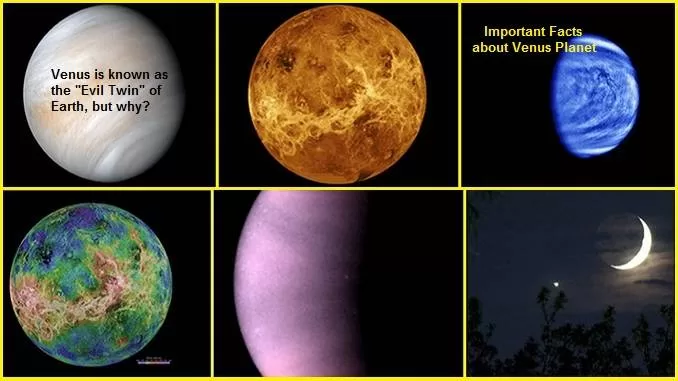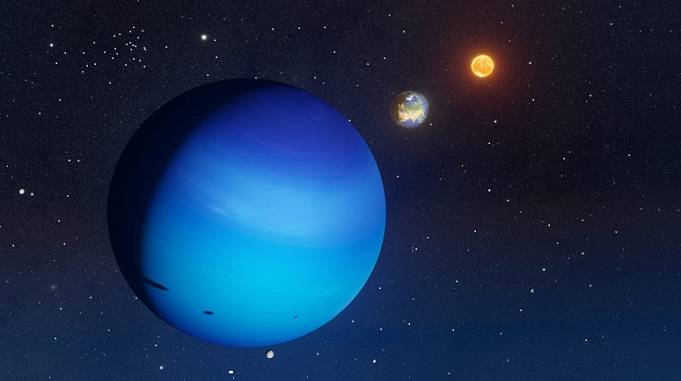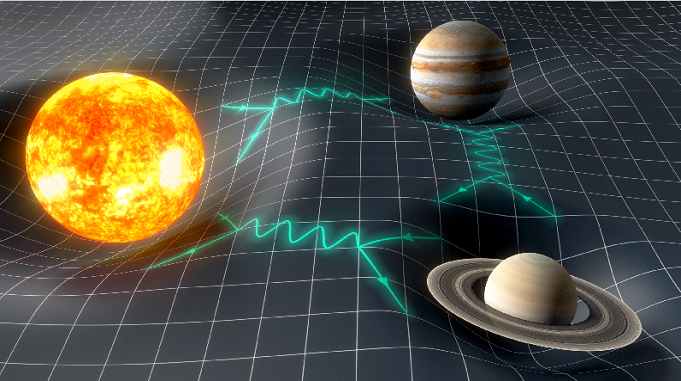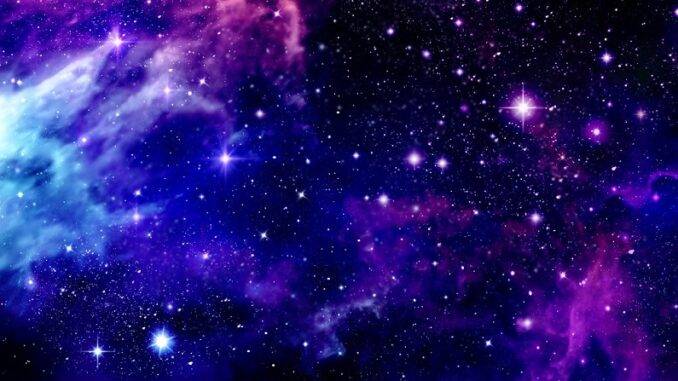
Venus is known as the “Evil Twin” of Earth, but why? Important Facts about Venus Planet
Venus is the Earth’s nearest planetary neighbor and is the second planet from the Sun. It is one of the four inner, rocky terrestrial planets. It is often called Earth’s twin due to similarities in size and density. But there are significant differences between the two worlds; these are not identical twins. In this article, we will explain why is Venus known as the “Evil Twin” of Earth.
1. Venus is a Toxic Twin
Venus is often known as “Earth’s twin” because they’re similar in size and structure, but Venus has extreme surface heat and a dense, toxic atmosphere. Earth and Venus would each be roughly the size of a nickel if the height of the Sun were the same as a standard front door.
2. Second Rock
Venus is the second nearest planet to the Sun. This planet orbits at a distance of around 108 million kilometers (67 million miles).
3. Diverse Terrain
Venus is a small, terrestrial, and rocky planet. Venus has a solid surface covered in dome-like volcanoes, rifts, and mountains, with expansive volcanic plains and vast, ridged plateaus.
4. Youthful Surface
The average surface of Venus is less than a billion years old, and possibly as young as 150 million years old – which is relatively young from a geological perspective. This is a major conundrum for scientists – they don’t know exactly what happened that made Venus completely resurface itself.
5. Long Days, Short Years
Venus rotates very slowly on its axis; – so one day on Venus lasts 243 Earth days. That is, It takes about 243 Earth days to spin around just once.
Venus orbits the Sun more quickly than Earth because Venus is so close to the Sun; – so one year on Venus takes only about 225 Earth days (that is, a year goes by fast on Venus, it takes 225 Earth days for Venus to go all the way around the Sun), making a Venusian day longer than its year!
That means that a day on Venus is a little longer than a year on Venus. Since the day and year lengths are similar, one day on Venus is not like a day on Earth. On Earth, the Sun rises and sets once each day. But on Venus, the Sun rises every 117 Earth days. That means the Sun rises two times during each year on Venus, even though it is still the same day on Venus!
Hence, the Time on Venus –
♦ A Day on Venus lasts 243 Earth days.
♦ A Year on Venus lasts 225 Earth days.
6. Backward Sunrise
Another big difference from Earth – Venus rotates backward on its axis compared to most planets in our solar system. This means the Sun rises in the west and sets in the east, opposite of what we see on Earth. (It’s not the only planet in our solar system with such an oddball rotation – Uranus spins on its side.)
Read Also – Stars are rapidly disappearing from the night sky. Why is this?
Read Also – Are Rocket Launches damaging the Ozone Layer?
7. Toxic Atmosphere
Venus has a thick, toxic atmosphere filled with carbon dioxide and it’s perpetually shrouded in thick, yellowish clouds of sulfuric acid that trap heat, causing a runaway greenhouse effect.
8. Runaway Greenhouse
Why is venus the hottest planet? – Venus’s thick atmosphere traps heat creating a runaway greenhouse effect that causes this planet to become the warmest in our solar system with surface temperatures hot enough to melt lead. The greenhouse effect makes Venus around 700°F (390°C) hotter than it would be in the absence of the greenhouse effect.
9. Hot Temperature
Venus isn’t the closest planet to the Sun, yet the temperature of Venus is very hot. It is the hottest planet in our solar system, even though Mercury is closer to the Sun.
In fact, it’s so hot on Venus, metals like lead would be puddles of melted liquid. Surface temperatures on Venus are about 900 degrees Fahrenheit (475 degrees Celsius) – hot enough to melt lead.
10. Stinky Clouds
Venus is permanently shrouded in dense, poisonous clouds of sulphuric acid that begin at an altitude of 45 to 70 kilometers (28 to 43 miles). The clouds smell like rotten eggs!
11. Life on Venus Planet – Facts
Although life as we know it is highly unlikely to exist on Venus, some scientists theorize microbes might exist high in the clouds where the temperature is cooler and the pressure is similar to that of Earth’s surface. Phosphine has been observed in the clouds, which is a possible indicator of microbial life.
12. Spacecraft Magnet – First Planet Explored by a Spacecraft
Early in the history of space exploration, Venus was intensively studied as it was the first planet to be explored by a spacecraft. As well as, venus was the first planet whose surface was reached by a spacecraft from Earth. But because of the extreme heat, landers had only survived for a couple of hours.
Read Also – Skywatch: Jupiter and Venus dance in the sky, in 2023
Important Facts about Venus Planet –
Which planet in our Solar System is the most beautiful, as well as the brightest and hottest? Or who in our solar system is our Earth’s sibling? OR which planet is the one nearest to Earth? So the answer is one – Venus, which is also known as ‘Morning star‘ and ‘Evening star‘, because it is visible in the east direction in the morning and in the west direction in the evening.
Venus is the brightest natural object visible in the sky at night after the Moon. But now where even the twinkling stars are not visible properly at night due to pollution, the planets may not possibly be seen with the naked eye without reducing the pollution. Well, let’s talk about the planet Venus, which is so beautiful that it is also called the ‘God of Beauty’.
Read Also about Light Pollution – Unveiling the Truth About This Growing Problem!
Read in detail – Effects of Light Pollution on Environment and Wildlife
Some other important facts about Venus Planet are as follows –
Venus’s Neighbors – Venus is the second planet from the Sun. That means Mercury and Earth are Venus’s neighboring planets. Just like Mercury, Venus doesn’t have any moons.
Venus’s Size – Venus is similar in size to Earth. Earth is just a little bit bigger.
Surface of Planet Venus – Venus looks like a very active planet and it’s peppered with intensely crunched mountains and thousands of large volcanoes. Scientists think it’s possible some volcanoes are still active. Venus has an active surface, including volcanoes!
The surface of venus planet is a rusty color.
Venus has crushing air pressure at its surface – more than 90 times that of Earth – similar to the pressure you’d encounter a mile below the ocean on Earth.
Read Also Important Facts about Venus Planet in Hindi
(Source – NASA)
Copyrighted Material © 2019 - 2024 Prinsli.com - All rights reserved
All content on this website is copyrighted. It is prohibited to copy, publish or distribute the content and images of this website through any website, book, newspaper, software, videos, YouTube Channel or any other medium without written permission. You are not authorized to alter, obscure or remove any proprietary information, copyright or logo from this Website in any way. If any of these rules are violated, it will be strongly protested and legal action will be taken.




Be the first to comment